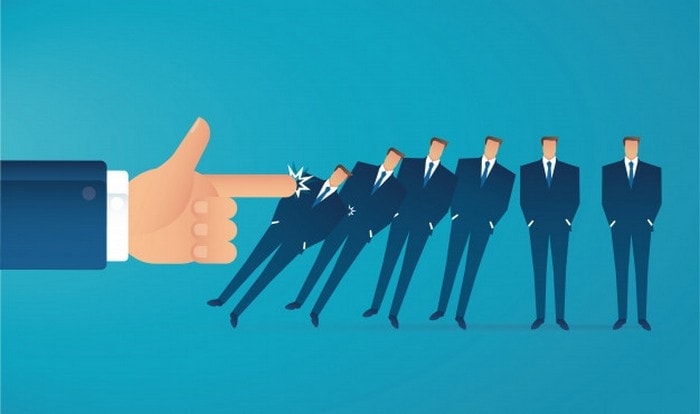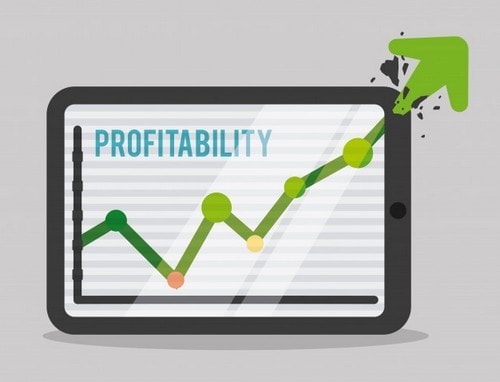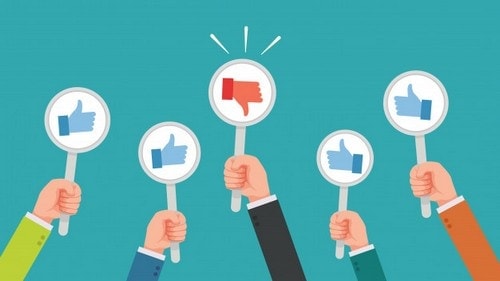Early adopters are customers who consider buying a business’s products or services during its initial launch period. They are also known as lighthouse customers.
Table of Contents
What is an early adopter?
Any firm or individual can adopt early. Early adopters use new products and technologies first.
This group will pay more even if they can get it cheaper later. Early adopters love new products, technology, and services and worry about their reputation. Early adopters buy the latest to maintain their social standing and reputation.
Early adopters accept products initially. They like everyday tech and product debuts. Always expect new gear, exhausting software, or first-in-class services. Therefore, early adopters will want to accept things first. Statistics show that 13.5% of people are early adopters.
Early adopters are often confused with innovators. However, they differ. Innovative folks buy new products immediately. They love new things, not to impress others. However, early adopters believe differently. They like to buy new products, but not just buy them. They buy items to show off their social status.
Products are usually more expensive than new ones. Early adopters buy without caring. Early adopters provide feedback after buying and using a product, which most companies use to improve their products and increase sales. Early adopters also provide feedback and other benefits, fueling a company’s growth and increasing profits.
Key Takeaways
- Early adopters employ new technologies or items after release, motivated by enthusiasm and needing to retain social status.
- They account for around 13.5% of the population and differ from innovators in that they are driven solely by enthusiasm for new items.
- Early adopters are willing to pay higher costs at launch, providing organizations with early income and essential feedback for product improvement.
- Companies rely on early adopters for profitability since their initial purchases and input can lead to greater acceptance and product improvements.
Origin of the early adopter idea
In 1962, E.M. Rogers developed the idea of “early adopters” in his theory of the spread of innovations (DOI). This theory shows how a new concept, behavior, or object slowly gains acceptance and spreads through a society or population. It is interesting to see how people in these systems begin to use and support new ideas, behaviors, or goods as they spread through society.
The DOI theory says that the adoption curve does not make innovations to happen all at once in society. Instead, it is a step-by-step process in which some people are more likely to accept new ideas before others. People in this group are called “early users” because they quickly use new technologies. They are essential to the lifecycle of new technologies, even though they only make up a small part of society.
Rogers also came up with a way to divide adopters into five different steps, each of which shows a different attitude toward accepting new ideas:
- Innovators: These are the people who break new ground; they are not afraid of taking chances and often come up with or implement new ideas first.
- Early Majority: This group is careful when venturing into new areas and only adopts new ideas after proof that they work. They come right after the early adopters.
- Late Majority: This group is usually skeptical and does not like change, so they only get on board once they see many others doing it and prove it works.
- Laggards: These people are at the very end of the line. They are very attached to customs and do not like change at all. They would instead stick to what they know until they had no choice.
The complexity of this framework makes it helpful for examining how new ideas and tools spread. To plan how to introduce new ideas into markets and social systems, it is essential to understand the role and traits of early users. These people quickly adopting new ideas not only help others do the same as other innovators but also show how cultural and technological changes happen in societies.
Qualities of early adopters
People who are early learners are different from other users because they are open to new ideas, willing to try things they do not know how to do, and open to change. Because they are eager to take risks, they can be the first to try new things and give feedback that shapes the user experience. Early adopters are braver than people who are afraid of, do not know much about a product, or do not like new technology. Because they are so courageous, they are paving the way for technological progress, making them thought leaders and trendsetters. Experiences help people unsure what to do make decisions that will help them adopt a product. In addition, makers improve their products based on their helpful feedback.
Why Early Adopters Adopt Products Early?
1. They are adventurous
These people fear being part of the crowd. They are adventurous, and their adventurous nature reflects their choices as consumers. Adventurous people like to do the work that other people fear to do.
When others wait for someone to take a risk and lead them forward, they hold the march and show the path to others.
2. They feel pleasure
New technology, products, and ideas work like drugs for them. When they buy new products, they get dopamine-triggered pleasure. Dopamine is a chemical that controls the reward and pleasure centers of the brain.
Because of this, marketers use ads that deliver a memorable message and grab consumers’ attention. Their pleasure in being rewarded overshadows their fear of failure.
3. They are instinctive
Like some people, early adopters instinctively know whether a product will succeed or fail once they understand that a company’s new innovation is the future.
They don’t wait for others to celebrate it. Take the example of Apple. It gives enormous importance to its early adopters and treats them royally. When introducing a new product, it shows long rows of early adopters.
Short rows of early adopters are considered harmful to the product. If there are more early than later adopters at your store when the product is launched, you should be reassured. Early adopters have the intuitive sense to know about the product’s performance.
4. The Fear of Missing Out (FOMO effect)
We have learned that early adopters are young, well-educated, well-versed people with an affluent background and a huge fan following. They don’t want to be the ones who finally learn about something.
The FOMO effect is also triggered by intelligent marketing strategies and product advertising, which makes them want to own the product and be among the first to own it. If they are social influencers, they must embrace the product early and let their audience know about it before their competitors.
Once you have learned who early adopters are, why they are essential for the technology adoption in your business, and why they are early adopters, you should know what strategies you should adopt to woo them.
In the next section, you will learn about a few methods and strategies that you can adapt to influence early adopters to adopt your products every time you launch something new.
Importance of Early Adopters
Now, early adopters make up 13.5 % of the world’s population. Since they buy products as soon as possible, they play a significant role in any company’s growth and development.
There are two main reasons why these early adopters matter so much.
1) Increases the profitability of the company
The main reason is that customers pay a lot for products during the initial launch phase, which helps the company earn more and increase profitability. Early adopters do not wait for products to mature to buy them at a discount.
They buy. Part of the explanation is that most early adopters know their social position. New, expensive, and unique things help people look different and plentiful, boosting their average social status.
They buy the stuff. Irrational behavior is expected in this group. They stand in enormous queues outside product releases because they feel a product reflects their social position.
2) They help the companies get feedback
Another reason early adopters are vital to the firm is because they are the first clients to buy a new product or service, so they give feedback. Thus, vendors might receive vital feedback to improve future product launches.
They assist companies in identifying product improvements and defects. This research method allows organizations to learn about their product from a consumer’s perspective, which will help them establish it.
Thus, early adopters are crucial to the diffusion of innovation companies. They boost a company’s sales and profits.
Strategies to influence early adopters
1. Pre-release your product
Early adopters’ behavior shows they want to be the first to purchase a product. Use a pre-release for early adopters and reward those who book a product before launch. Early adopters take risks because they believe they will be rewarded.
2. Reach your early adopters and establish a relationship with them
Create a list of your early adopters and establish a relationship with them to make them feel royal and better than others. Knowing them will benefit you as you learn about their expectations and can get innovative ideas from them.
How companies entice early adopters
Early users are generally eager and curious and like new things they do not know much about. They do what they do because they fear losing out, or FOMO.
Companies can use tried-and-true methods to get these early users to buy their products. One way to make the early adoption process go more smoothly is to give out easy-to-read tips and data sheets.
To succeed, you must fully understand early users and their specific needs.
Marketers can learn about users through direct conversations, which helps them create instant and easy-to-use products. Just as important is coming up with an exciting story that will motivate early users to try out the new product.
Early Adopters vs. Laggards
Many people wait for new technology or do not want to use it. These people are called early users.
Laggards do not like to try new things immediately because they do not have the money or interest. They also do not want new technology if they think it will make things too different or take away jobs.
People who are early users might start using devices right away that let them control the temperature and lights in their homes. Conversely, Laggards might wait until many people buy these gadgets and the prices drop. People who are set in their ways might not want robots to do workplace work because they are afraid of losing their jobs or having things changed.
Advantages and Disadvantages of Being an Early Adopter
Being an early adopter of new technology has both rewards and cons.
Advantages of Being an Early Adopter
- Feedback Influence: Early adopters have a unique opportunity to provide feedback that can shape the creation and enhancement of new technologies. This can result in product improvements that better satisfy consumer demands.
- Pioneer Prestige: A pioneer in adopting new technology carries a certain prestige. Early adopters frequently benefit from the social and professional acclaim that comes with being ahead of the curve, which can help them advance in specific circles.
- Competitive Edge: Early adopters can acquire a competitive advantage in their sector by using new technology before it becomes widely available. This can range from increased efficiency to developing new ways to communicate with customers.
- Influence as Thought Leaders: Early adopters can gain influence in their sector by leveraging their knowledge. Their thoughts and experience in emerging technologies can help them establish themselves as go-to information sources, boosting their professional status and impact.
Disadvantages of Being an Early Adopter
- Limited Content and Uses: New technology may have limited uses or content initially. For example, buyers of the most recent smart home devices may find fewer compatible items or services accessible until the technology’s ecosystem grows.
- Risk of Obsolescence: The technology or format used may become obsolete. Similar to how Blu-ray outperformed HD DVD, selecting the wrong technology can result in considerable replacement costs and the hassle of owning outdated equipment.
- High initial costs: Early adopters may pay substantially more than servers. New technology frequently carries a premium price tag that may not justify the initial investment, especially given that prices typically fall as technology becomes more widely available.
- Potential Defects: Early versions of new technology may contain flaws or defects that manufacturers have not yet detected. Early adopters are influential “beta testers” for these items, encountering issues that will be addressed in future versions.
- Rapid Depreciation: As consecutive and improved product iterations are developed, the value of the first selected technology may depreciate rapidly. This might create a sense of loss if more advanced models become available at reduced prices.
Negative Impact of Early Adopters on a New Product
Early adopters are often seen as beneficial, yet they can also disrupt a product’s lifetime.
Early adopters belong to a specific consumer segment. They welcome innovation and will pay more for a first-mover advantage. This demographic’s behavior and input may accidentally skew product and pricing perceptions, which may not appeal to the broader market.
Consider an expensive smartphone launched in Brazil, a price-sensitive market. Early adopters may pay more for the phone, skewing market acceptance. This may misrepresent the product as affordable for most people.
We can identify the following drawbacks of relying on early adopters:
1. Tolerance for Product Flaws
Due to their focus on novel features or being among the first to own the goods, early adopters often tolerate product defects. Thus, they may downplay important design or functioning flaws for most users.
2. Ignorance of Product Pricing
Early adopters’ propensity to pay top dollar can affect a product’s pricing strategy. This customer category generally relies on exclusivity rather than product value from a general consumer’s standpoint.
3. Inherent Product/Brand Bias
Techies, influencers, and brand devotees are early adopters. This may result in intentionally optimistic feedback, skewing product performance.
4. Differences in User Feedback
Early adopters’ tech-savvy and high-income demographics strongly impact product usage and feedback. They may want advanced features, which will raise prices and alienate most customers.
To illustrate, an early adopter might utilize the advanced smartwatch to continuously track their vitals due to a specific health condition or athletic training, advocating for additional specialized sensors. This could drive the cost up to $800. However, the average user interested in standard fitness tracking and notification features might only require and be willing to pay for a device costing at most $300.
Examples of Early Adopters
Apple best illustrates early adopters. Apple is one of the four largest firms in the world, and early adopters helped it succeed.
When it debuted in 2007, the iPhone cost approximately $600. This is a considerable investment in items the company had no expertise in. However, many early adopters bought it without hesitation. Two months after its launch, the iPhone’s pricing dropped to $400 and then to $200.
Early adopters obtained this new technology before their contemporaries because they wanted to try it first.
Still, the ‘Apple’ mania is evident. When the iPhone is updated, early adopters buy it first. Despite not knowing the new technology, features, or utility, they buy the hipness when it is out.
Conclusion
An early adopter is a group of people who buy new goods before most others. Risk-taking trendsetters significantly affect whether a new product succeeds or fails. Getting early adopters can be a strategic goal for many businesses. However, early adopters often have to pay more for new technologies, even though they could become essential voices for cutting-edge technologies. Also, there is a chance that the technology will lose value if it does not catch on with most people.
Liked this post? Check out the complete series on Marketing


